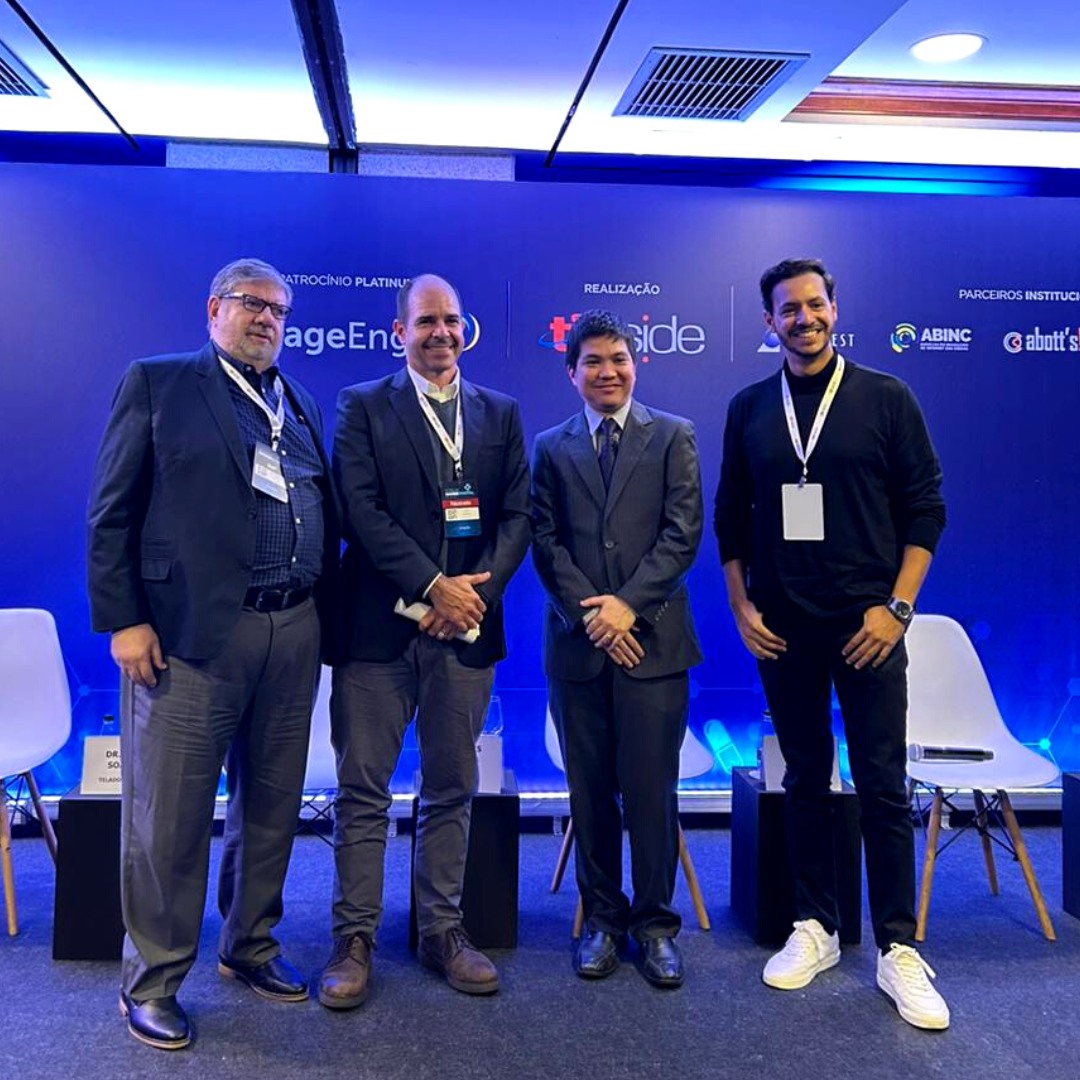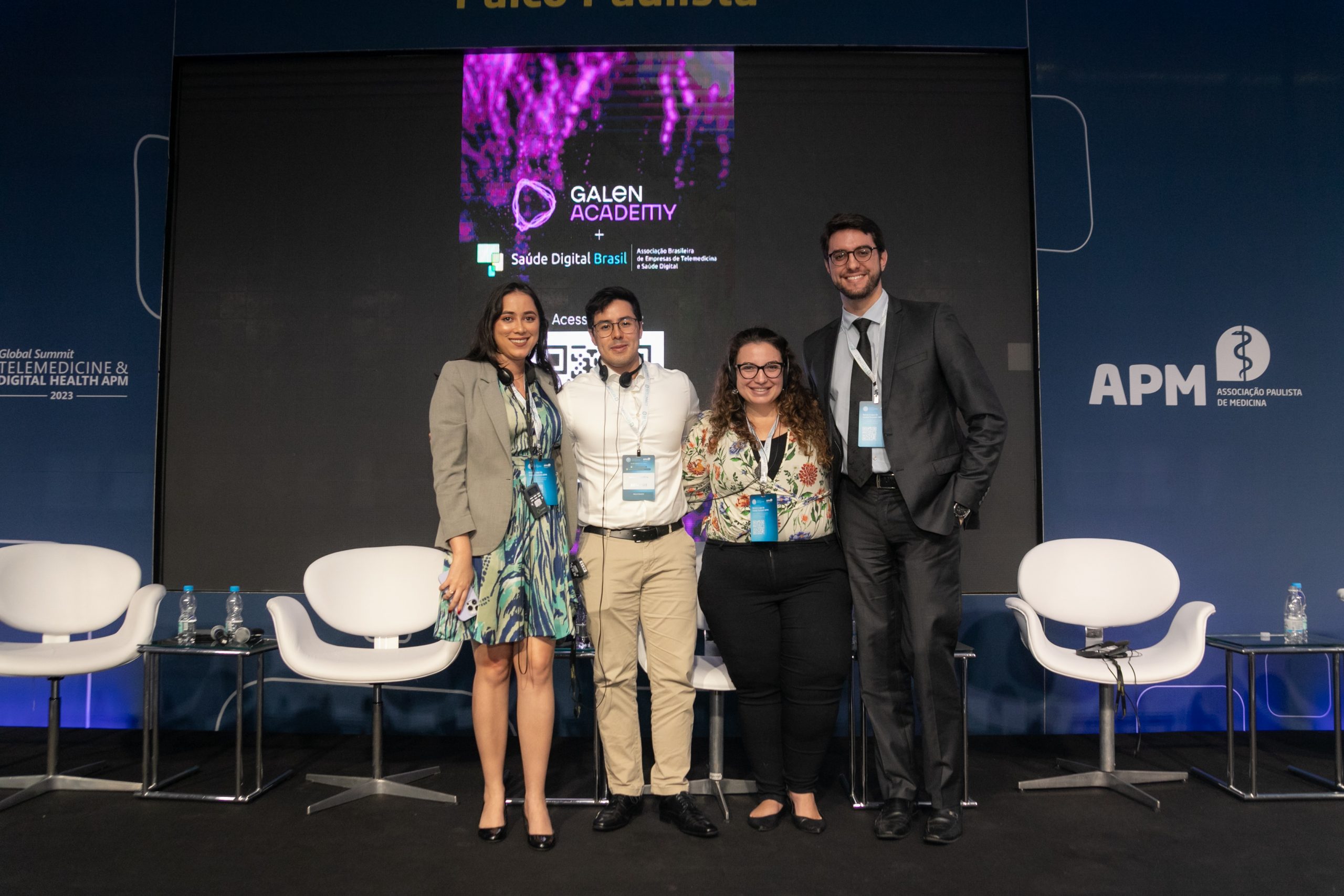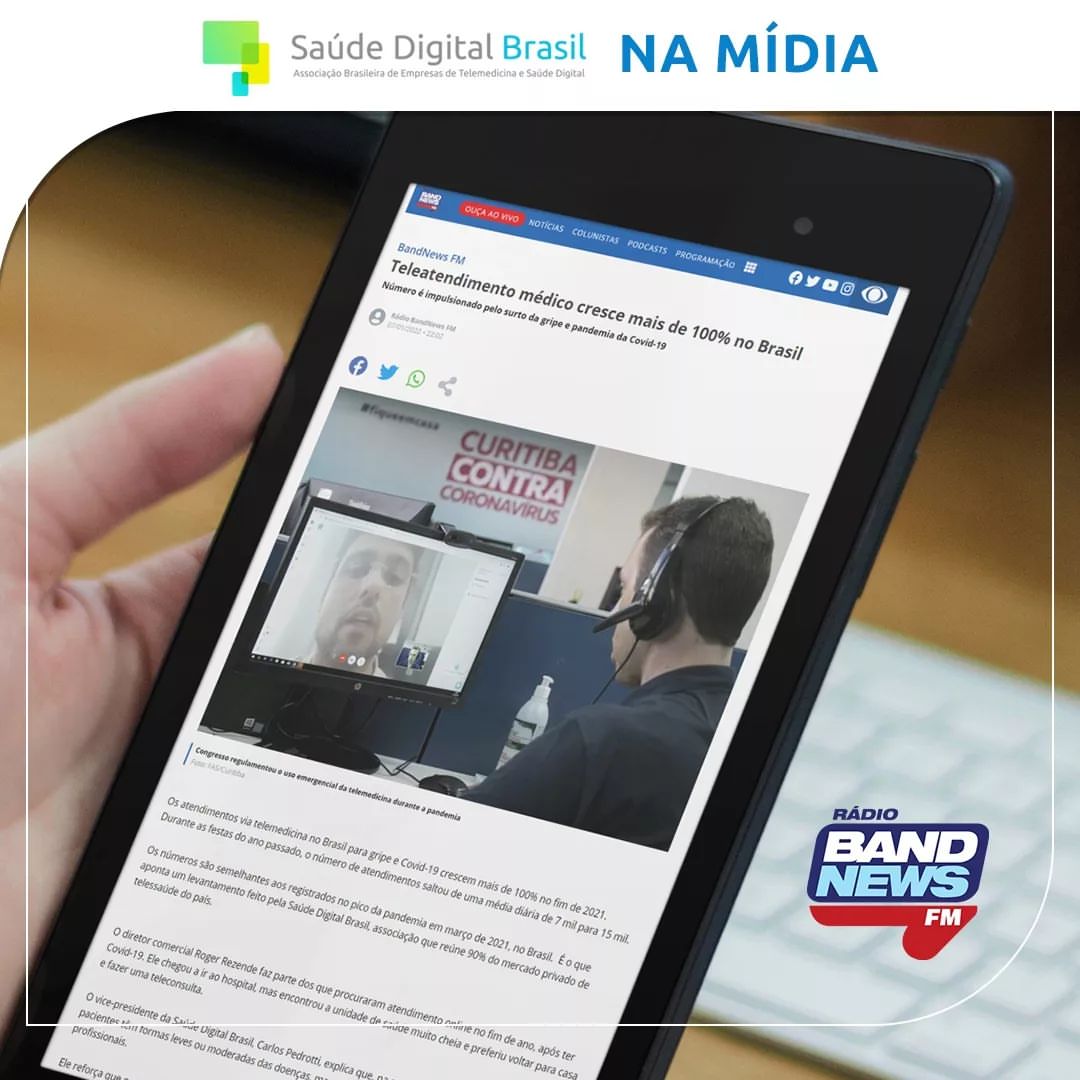The then President of the entity, Caio Soares spoke about the drivers of telemedicine, professional training and generative artificial intelligence, together with other experts in the sector
Telemedicine will increasingly become a part of everyday patient care, but adopting the technology requires additional skills and tools. The topic was addressed by the president of Saúde Digital Brasil (SDB), Caio Soares, during the 14th edition of the Digital Health Forum, held on June 13 by TI Inside, in São Paulo/SP.
The panel, entitled “Telemedicine, a sector under construction”, also included the participation of Luís Tibana, Medical Superintendent of FIDI – Foundation Institute for Research and Study of Diagnostic Imaging, and Thiago Liguori, director of the startup Pipo Saúde. The moderator was Claudiney Santos, director of TI Inside.
For Soares, the evolution of telemedicine in recent years has been dramatic. Not only in Brazil, but worldwide, it will be part of the new health system. Now it is necessary to discuss what this implies. “Looking back, we went through a phase of massive adoption and acceptance of the new modality, both by doctors and patients. There was an expansion in training and tools involving teleconsultation, remote monitoring and the use of devices”, he explained.
Furthermore, with the end of the Covid-19 pandemic, a new one began: that of mental illness, which ended up boosting telepsychology and telepsychiatry services. Other boosts for telemedicine were technological improvements and the emergence of 5G, allowing faster data integration and dispensing through electronic prescriptions. “Electronic prescribing is an infinitely safer process, reducing errors,” highlighted Soares.
Other important points when talking about telemedicine are the General Data Protection Law (LGPD), the medical code of ethics and digital bioethics. Patient safety has also advanced significantly with the advent of telemedicine and has brought the possibility of reducing waste in healthcare. “By having digitalized and secure data in the medical record, we are able to obtain real-time information about patients,” he added.
Adopting telemedicine is essential when it comes to ensuring the sustainability of the system, recalled Tibana, from FIDI. He showed that inflation in healthcare has been around 20% per year for a decade, which represents four or five times the value of the IPCA per year. In other words, the costs of medical services increase at a higher rate than the adjustments in the prices charged. Therefore, it is natural that the efficiency of health plans has been decreasing, while the claims rate has increased.
“We are living in difficult times. The trend is that there will be no increase in transfers, so if we do not become more efficient, the sector will collapse,” said Tibana. This situation can change with interoperability, integration between systems, the use of artificial intelligence and algorithms to support clinical decision-making. “Telemedicine was already being discussed before the pandemic and is now a reality. There is a lot of waste in the sector and since there will be no more investment, we need to be more efficient and do more with less,” he added.
With this in mind, teleradiology can greatly speed up the time it takes to identify clinical findings and reduce the impact on both the system and the patient. This can be done by customizing the PACS system with an artificial intelligence algorithm to prioritize a given patient’s journey depending on the severity of the condition. For example, the system learned to identify an intracranial hemorrhage and immediately place the exam at the top of the list.
“Imagine that it is a small hospital that does not have a specialist. With teleradiology, this problem does not exist, because the doctor can analyze the exam remotely, from any location, in a few minutes. The biggest bottleneck has always been the time it takes for the prescribing doctor to become aware of the exam and take the necessary action,” said Tibana.
According to Soares, from SDB, when care is provided in less time, there is a more favorable outcome, earlier diagnosis and treatment, and more efficient monitoring. “Saving time in medicine means improving the population health of that group of people. The result of this is impactful from a financial point of view,” he said.
Liguori, from Pipo Saúde, recalled an important piece of data released by SDB, that more than 7.5 million consultations were carried out via telemedicine in Brazil between 2020 and 2021, proving that people are willing to carry out part of their care journey remotely. He also highlighted that text-based care is also covered by the law.
SDB Actions
When asked by the panel moderator about the SDB’s actions, Soares explained that there are several areas currently under discussion: the limits of electronic prescriptions, which do not include controlled medications; medical procedures in institutions that do not have a technical health representative; and generative artificial intelligence. “Who has never asked ChatGPT for health advice? Who will be held responsible if someone takes a medicine and becomes ill?” he asked.
In this case, the responsibility needs to be shifted, it cannot be the tool's. Two points must be considered here. Always in the clinical outcome, the final validation must be the responsibility of the human professional. And, secondly, in this case, the responsibility for using the website does not lie with the professional, but with the individual. “We need to prepare society to have this mindset. The responsibility for my health is entirely mine,” said Soares.
Regarding remote operations using robots, via 5G internet, he does not see a practical application for the population yet, but he recognizes that there are many possibilities due to new technologies and that, perhaps in five years, we will live in a different reality.
Professional training
The panel participants argued that telemedicine should be part of the curriculum of all health courses. After all, it is important to raise awareness among students in terms of innovation, as telehealth is already part of reality and it is necessary to follow the rules and have the necessary documentation.
Soares, from SDB, recalled that the current generation of health professionals experienced the transition from analog to digital, but that the next generation will be completely digital, and that changes everything. “Therefore, the effort for telemedicine education is Herculean for the current generation and much easier for the next. Medical schools and other courses in the health area are beginning to adapt,” he acknowledges.
The challenging point here, concluded the president of the SDB, is not digital transformation, but digital bioethics. “It is as important, if not more important, than professional training in the digital world,” he explained. Digital bioethics seeks to promote ethical reflection on the application of digital technology in healthcare, ensuring the protection of patients’ rights and values, equality in access to technology, and the professional responsibility of those involved.





